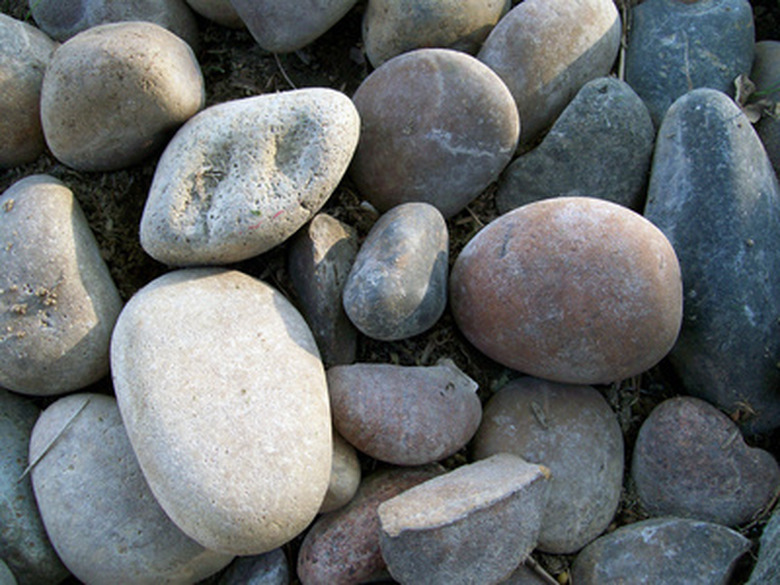Types Of Rocks And Soil
Rocks and soil are all around us, in all shapes and sizes, in all colors and forms. The earth's crust is made primarily up of these two things which were formed from inside the earth. Rocks eventually break down to become soil. There are three basic types of rocks on earth and four basic types of soils.
Igneous
Igneous
Igneous rocks form directly from cooling of magma coming from inside the earth. A phase change occurs when the liquid magma loses heat and eventually turns solid. These rocks make up the majority of the earth's crust. When an igneous rock is given a name, there are two characteristics that are important: composition and texture. Composition is defined as what the rock is made of and texture is how large the crystals are. Examples of igneous rocks are granite, obsidian and pumice.
Sedimentary
Sedimentary
Sedimentary rocks are considered "secondary" rocks because they often are made up of pieces of other rocks. Igneous rocks in the crust of the earth are sometimes covered by a thin layer of loose debris and sediment that gets compacted together to form sedimentary rocks. Clastic sedimentary rocks are made up of different rock pieces and cemented together. Chemical sedimentary rocks form when water that is standing evaporates. Organic sedimentary rocks are made up of organic material like calcium from animals. Sandstone is a type of clastic rock, rock gypsum is a type of chemical rock and bituminous coal is a type of organic rock.
Metamorphic
Metamorphic
Metamorphic rocks are rocks that have changed. These rocks can begin as any type of rock and then end up as a metamorphic rock by moving into an unstable environment for the material inside the rock. Metamorphic rocks include slate, marble and schist.
Sand
Sand
Sandy soil doesn't have a large presence of nutrients and can be susceptible to temperature fluctuations. The texture is gritty and crumbly. This type of soil isn't recommended for planting because of the lack of nutrients and because the water drains quickly from the soil.
Clay
Clay
Clay soil has a large presence of minerals but is lacking in organic material. The soil can be very hard and even fragile when dry but will feel slimy and slick when wet. The soil holds water but can become waterlogged if there is too much water.
Silt
Silt
Silty soil is full of nutrients and will feel like talcum powder when moisture is absent. Because this soil is so fine, it is susceptible to erosion and may feel a bit slimy when moisture is present.
Loam
Loam
Loam soil is a mixture of clay, sand and silt soils. Because of the mixture, it's considered to be the best for planting. There are enough nutrients in the soil and the soil is able to drain efficiently. Because of these reasons, almost any plant can be grown in this type of soil.
Cite This Article
MLA
Martinez, Christina. "Types Of Rocks And Soil" sciencing.com, https://www.sciencing.com/types-rocks-soil-6659814/. 24 April 2017.
APA
Martinez, Christina. (2017, April 24). Types Of Rocks And Soil. sciencing.com. Retrieved from https://www.sciencing.com/types-rocks-soil-6659814/
Chicago
Martinez, Christina. Types Of Rocks And Soil last modified August 30, 2022. https://www.sciencing.com/types-rocks-soil-6659814/
